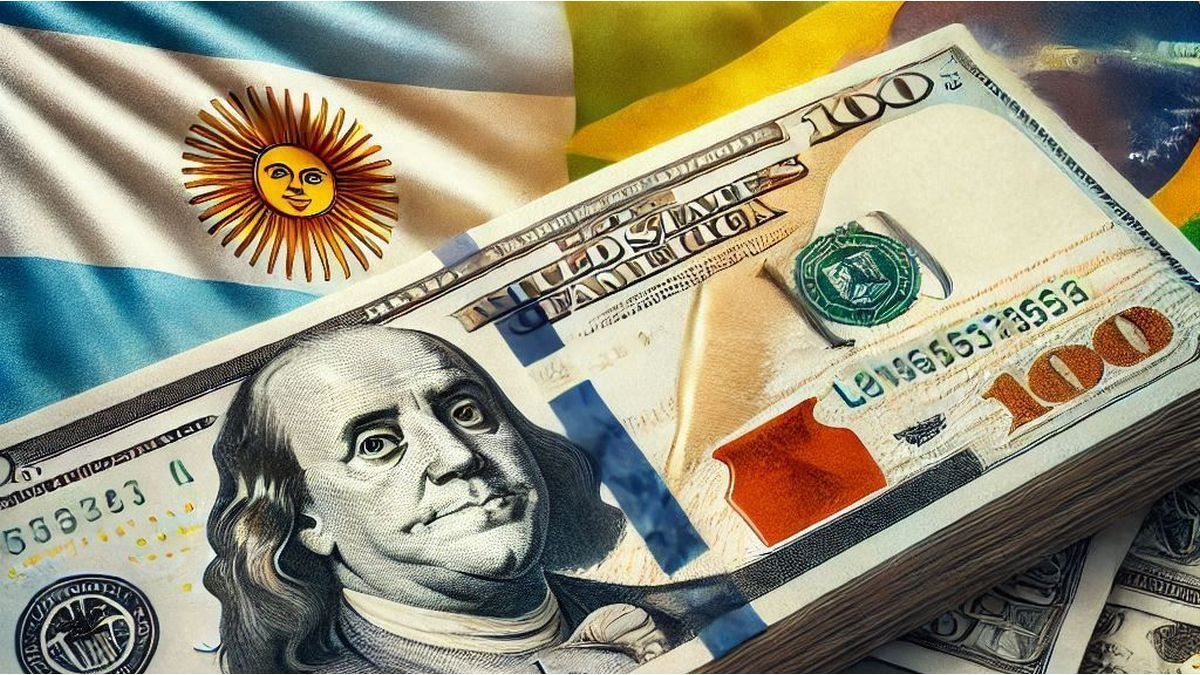Rice, milk and pork are three basic foods of the family basket which, despite having a higher price in Argentina than in Brazil, generate lower income for local producers compared to Brazilians. In this scenario, the appreciation of the Argentine peso against the Brazilian real raises concerns about the competitiveness of the food sector, one of the most relevant for the country.
Coninagro carried out a Comparative analysis of 18 products in online supermarkets in both countries. According to the study, 10 of these foods are cheaper in Argentina: orange, apple, red wine, sunflower oil, flour, peas, sugar, chicken, potatoes and mozzarella cheese. On the other hand, the The Argentine price exceeds the Brazilian price in other items such as: rump steak, bread, whole milk, olive oil, pork shoulder, rice, grass and black beans.
“Of the eight that are most expensive, the analysis was deepened in three that are most representative: rice, milk and pork. For the consumer, the three products are more expensive in Argentina, but Argentine producers receive less than Brazilian producers in rice and milk and almost the same in pork. Beyond the exchange rate, the explanations must be sought outside, because even with exchange rate appreciation, producers are competitive.”they indicated in the agricultural entity.
graphic-coni-1024×578.png
Rice, milk and pork are three basic foods in the family basket thatdespite having a higher price in Argentina than in Brazil, They generate lower income for Argentine producers compared to Brazilian ones. In this scenario, the appreciation of the Argentine peso against the Brazilian real raises concerns about the competitiveness of the food sector, one of the most relevant for the country.
Coninagro carried out a comparative analysis of 18 products in online supermarkets in both countries. According to the study, 10 of these foods are cheaper in Argentina: orange, apple, red wine, sunflower oil, flour, peas, sugar, chicken, potatoes and mozzarella cheese. On the other hand, the Argentine price exceeds the Brazilian price for products such as rump steak, bread, whole milk, olive oil, pork shoulder, rice, yerba and black beans.
Rice
Rice in Argentina is the most expensive between both countries, with a price of USD 1.94 per kilo, which represents 58% more than the average in Brazil, where it is USD 1.23 per kilo. On the other hand, the income for producers is quite similar, with a difference of up to 2% between both markets.
As for the production costs of rice are very similar in Argentina and Brazil. However, in Argentina it is US$0.02 per kilo more expensive to produce than in Brazil.
Milk
According to the Coninagro study, the price of a liter of milk in supermarkets is 25% higher in Argentina than in Brazil. However, Brazilian producers receive 11% less per liter compared to Argentine dairy farmers.
In relation to the production costs, In Argentina, the entrepreneur’s remuneration per liter of milk is US$0.01, 90% lower than in Brazil, where it amounts to US$0.09, the main difference.
Pig
In supermarkets, the price of pork in Argentina is 17% higher than in Brazil, reaching USD 3.96 per kilo of meat, compared to the Brazilian average. Regarding the income of producers, the study revealed a general parity, although in the last two months prices in Argentina have been higher, with USD 1.63 per kilo of live pork.
Pork production costs are also higher in Argentina, averaging USD 1.47 per kilo, in contrast to USD 1.10 per kilo in Brazil. According to the analysis, this difference is mainly due to higher labor costs in Argentina.
Tax burden
“In the case of the basic foods with a VAT of 10.5%the tax burden in Brazil is slightly lower than in Argentina. However, for products such as milk, taxed with 21% VAT in Argentina, the tax burden is significantly higher,” they explained.
In Brazil, the main tax applied to the marketing of food is the Tax on Circulation of Goods and Services (ICMS), a state tax, not a federal one, whose rate varies depending on the state and the type of product. For food, the ICMS averages close to 12%.
“This tax combines characteristics of VAT and Gross Revenue. However, Brazil has implemented a tax reform that will introduce a new VAT, which will increase the tax burden in that country. In addition, there is the Tax on Services of Any Nature (ISS), similar to municipal rates in Argentina, whose application varies considerably between different municipalities,” they detailed.
Source: Ambito
I am Pierce Boyd, a driven and ambitious professional working in the news industry. I have been writing for 24 Hours Worlds for over five years, specializing in sports section coverage. During my tenure at the publication, I have built an impressive portfolio of articles that has earned me a reputation as an experienced journalist and content creator.




